All about organizers for sewing supplies
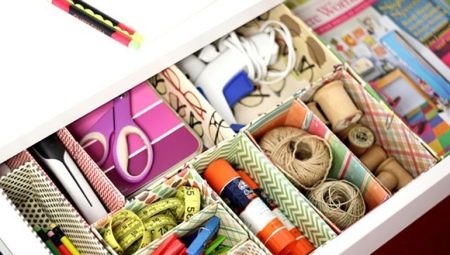
Any thing is always easier to find if it is in its place. To store a large number of small items, special devices are produced - organizers. He will help a needlewoman to quickly find scissors, a needle by number, not to get confused in the shades of threads. In it, not a single instrument will be lost and will always be at hand.

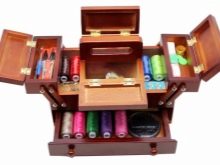
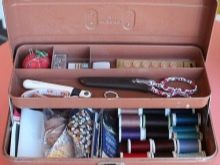
Varieties and forms
The organizer for sewing accessories can be of different configurations, sizes, different materials of manufacture. It is usually used to store handicrafts, sewing supplies, threads, yarns, beads, etc.
The stores offer a large selection of organizers, they differ in shape, number of sections, colors and design.
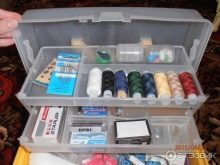
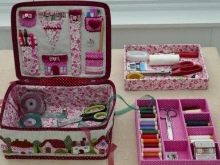
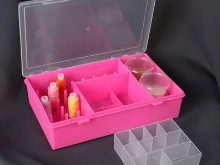
In appearance, several options can be distinguished.
- Chest of drawers or wardrobe - often this is furniture with many small sections; it is convenient to store various trifles and packages in shallow drawers. There are floor-standing, table-top and wall-mounted versions.
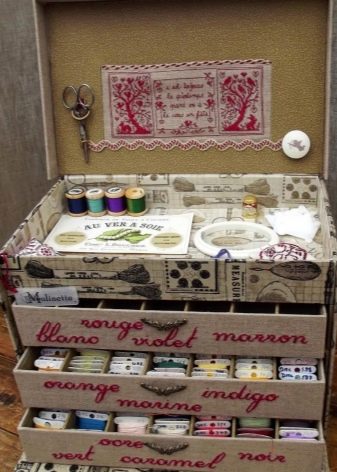
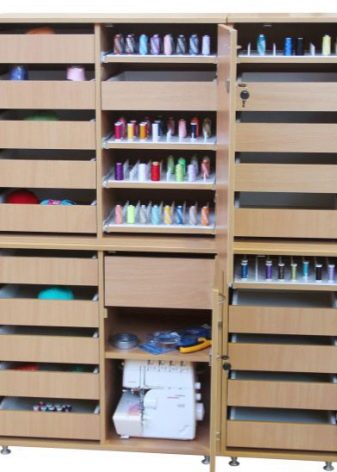
- Casket - a beautiful and compact version, inside there can be a division into several sections or special removable compartments, there are types with pull-out shelves.
Some manufacturers produce a set of boxes, decorated in the same style and color, but in different formats.
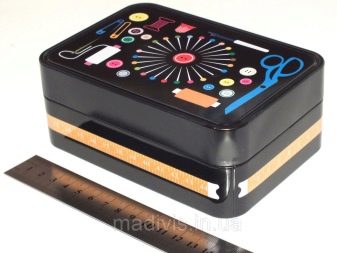
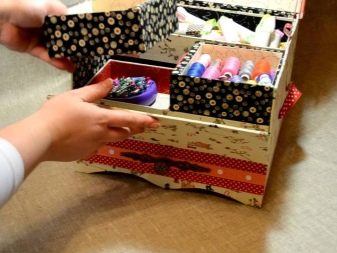
- Containers - most often these are wooden or plastic boxes with many compartments. There are for spools, yarn, beads, and there are multifunctional ones for tools, accessories, sets for sewing, embroidery, knitting.

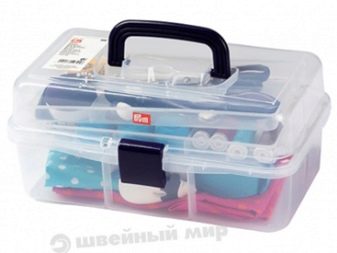
- Handbags - cloth or leather products with an unequal number of sections to accommodate only needles, hooks, or for all tools and materials, including unfinished work.
There is an organizer belt: it is convenient to take it with you on the road and use it when working, for example, when trying on or transferring a pattern to fabric.
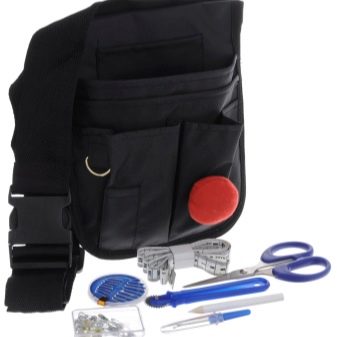
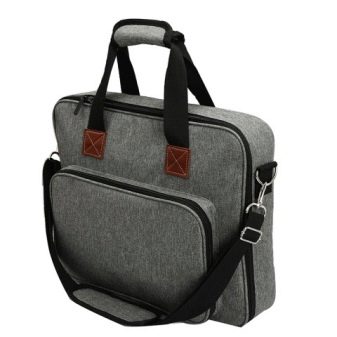
- Baskets - these are wicker or fabric-sewn containers sometimes with 2-3 compartments and patch pockets for accessories. They can be with or without a lid. Often used for skeins of yarn.
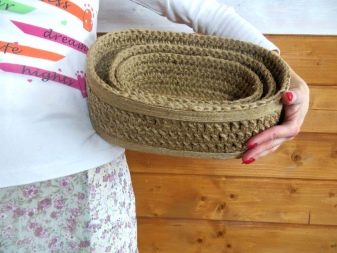
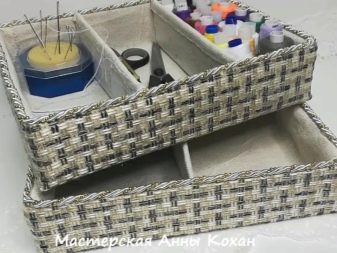
- Hanging with pockets - This is a fabric or oilcloth cut with many pockets of different sizes. During work, it can be hung in the corner for needlework, and after the end of the lesson, roll it up and remove it.
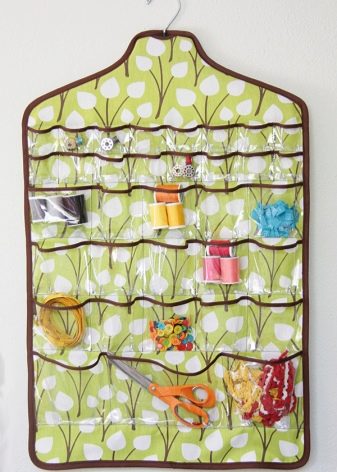
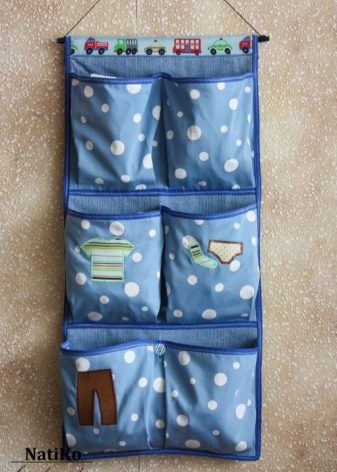
- Little book - a folding version in the form of a folder or pencil case, small ones are suitable for sewing accessories, and in landscape format they are used for sorting floss, patterns for embroidery, patterns, etc.
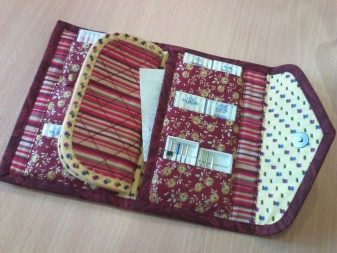
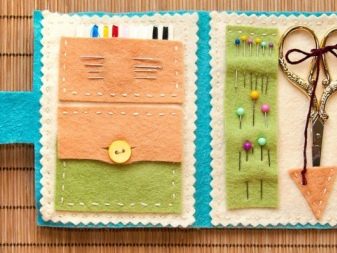
- Mini box - a small container about 10 cm in diameter with or without several compartments inside. It contains needles, scissors, a measuring tape and other little things. The tight lid prevents the contents from scattering.

Organizers are distinguished by the type of items that are stored in them.
- Universal Are bulky containers for materials and tools. They can store all the necessary accessories for sewing and knitting, or you can assemble a set for working on a certain type of product. For needlewomen who are simultaneously engaged in several projects, it is recommended to sign each set and attach a list of contents to the box.
- Specialized - this is a container for a certain type of items or accessories, this can include a case for scissors, an organizer for floss or beads.
- For example, bobbins, spools, mini-bobbins with ribbons - usually stored on special rods or in sections of 2-3 pcs.
- There are thread holders - these are devices where the threads are placed by color. For bobbins, a rotating type is suitable, and for a floss in the form of a sheet with many holes.
- Yarn holder - this is a base with a strong core, on which a skein of yarn is put, or a container with a lid and a hole for the thread.
- There are special organizers for storing individual tools: needles, hooks, knitting needles, scissors, etc.
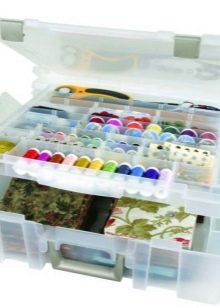
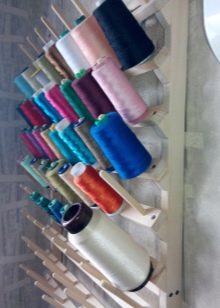
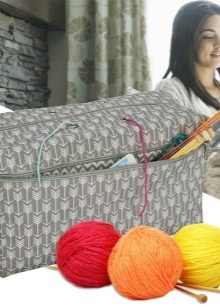
Materials (edit)
Organizers can be made from a variety of materials:
- plastic;
- wood;
- plywood;
- fabrics;
- tin;
- wicker made of paper or wicker.

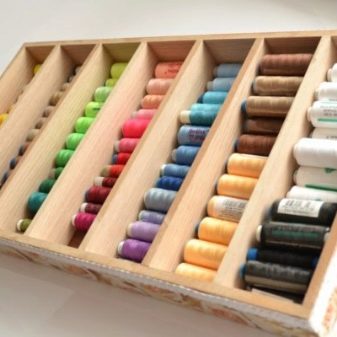
Needlewomen often adapt cardboard boxes, glass jars, food containers as organizers.
In fact, it doesn't matter what the organizer is made of, first of all, it must be convenient, functional and placed so that all accessories are easily accessible, and every detail can be quickly found if necessary.

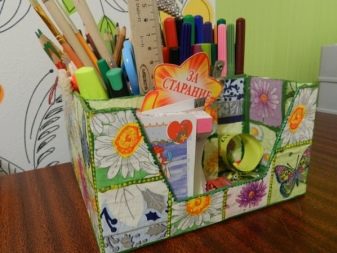
Selection recommendations
Before choosing an accessory for needlework, it makes sense to evaluate where all the items will be placed and how convenient it will be to use them. They must correspond in size and weight, often when choosing, they pay attention to the design. You can also think about where all the special devices will be located in the house.
- Table - this is one of the most popular places to work, and desk drawers are becoming a suitable place for canvas, thread, unfinished work.
- Wall - the space above the workplace is often used for the necessary little things: here you can hang a cabinet, a stand with pockets or a shelf.
- Door - in a small room, not only an interior door is often used, but cabinet doors, hanging baskets or fabric pockets are placed on them.
- Cupboard - a transformer rack with many sections and drawers is the dream of many craftswomen, but you can store handicraft items in almost any closet, the main thing is to organize all the details ergonomically.
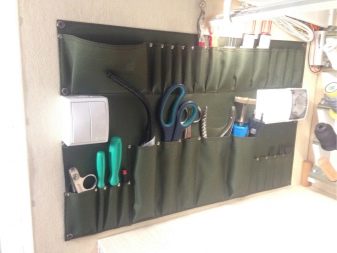
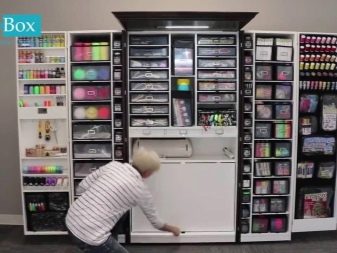
What to focus on when choosing an organizer?
First of all, a functional organizer should be:
- made of durable material;
- keep in shape well;
- zip up or close tightly;
- look neat and aesthetically pleasing.
Of course, you should take into account what items you need it for storing: it will be a basket for yarn or a palette for sorting floss - the choice depends on the needlewoman.
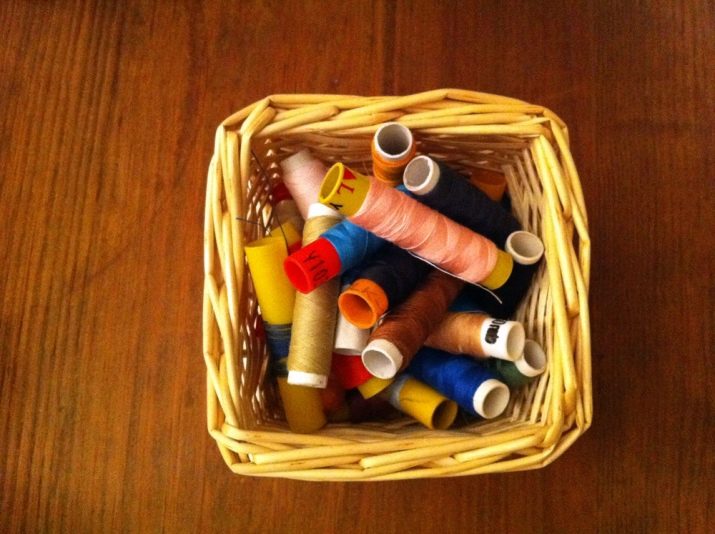
How to do it yourself?
Let's consider how you can make a thread organizer from a plastic bottle.
To make this device you will need:
- plastic bottle in the shape of a square, but not round,
- cocktail tubes - these will hold the coils.
Sequence of work:
- the bottle is cut vertically from the neck almost to the very bottom, it is left untouched;
- coils are placed along one of the halves, marking the points for the holes with a marker;
- holes are made with a soldering iron or a hot awl;
- the tubes are threaded into holes and through the coils, cut off at the edges, a bead is glued onto wooden skewers from one end so that the stick does not fall out;
- do the same with the second half of the bottle;
- a hole for the thread is made above each spool;
- screw the cap onto the neck, the filament holder is ready.
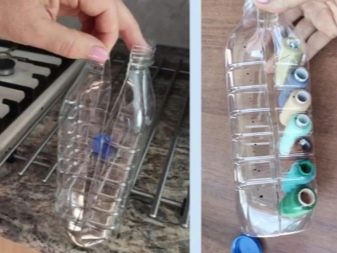
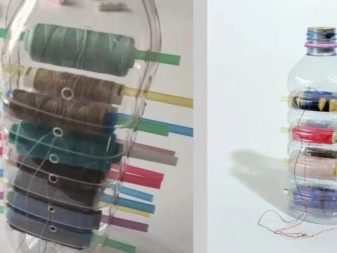
The organizer folder is also quite simple to make.
It is convenient to take such a small sewing case with you on the road.
Would need:
- a piece of fabric measuring 22x14 cm for the cover;
- fabric rectangles 11x14 cm for interior decoration - 2 pcs.;
- shreds 11x12 cm for pockets - 2 pcs. (we cut out each detail with an allowance of 1 cm);
- non-woven fabric by the size of parts (without allowances);
- cardboard;
- border or lace;
- a piece of felt
- threads.
Manufacturing sequence:
- we put interlining under each rectangle of fabric, leave allowances;
- for parts for the inside, we iron the allowances on one side;
- we fold the patches for pockets in half and fill with non-woven fabric, sew lace or a border in the upper part;
- put the pocket on the part of the inner side of the organizer;
- decorate the cover with decorative lace;
- we put the inner parts on the cover with the wrong side out, set aside half a centimeter between the two inner parts so that the book can be folded conveniently;
- sweep around the edges, and then sew by hand or on a typewriter;
- turn out, sew on a piece of felt on one side, along the edge a button and a loop;
- cut out 2 rectangles 11-13 cm from cardboard and insert from the inside into the slots;
- we sew the middle with a blind seam, slightly lifting the corners of the folder;
- a pencil case for storing needles, threads, scissors and other little things is ready.
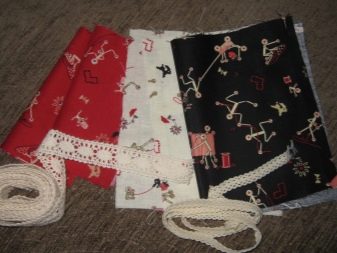
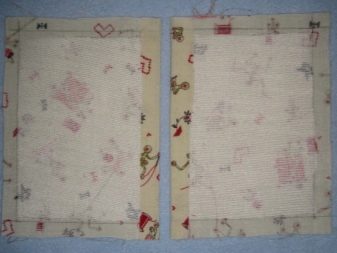


A spacious cardboard container will always come in handy.
Cardboard is one of the most affordable materials from which you can make a box or even a basket for needlework.
You will need:
- 2-3 boxes of different sizes made of thick cardboard;
- white thick paper;
- colored dense matter;
- braid or lace;
- hot glue.
Manufacturing sequence:
- the boxes are cut so that one can freely enter the other, the edges are pasted over with thick paper;
- the design should represent a compact storage system: the two halves are assembled according to the principle of a suitcase, which has a wide, solid bottom;
- each wall is pasted over with cloth;
- the outside can be pasted over with cloth or laminated paper; lace or braid is used to decorate the edges;
- in order for the structure to open and close easily, the bottom is reinforced with dense strips of fabric, the bottom is glued to the side parts;
- fabric strips are glued on both sides, even in two layers for greater strength;
- boxes should be inserted into the organizer without hindrance;
- on the side walls, with the help of hot glue and braid, cells are made to fix small accessories, you can take lace or a regular elastic band instead of braid;
- partitions are made in the inner boxes and fixed with hot glue, the size and location of the partitions can be any;
- the upper container is kept on the lower one precisely thanks to the walls of the inner sections;
- for easy carrying, you can make handles: they are made of cardboard or thick fabric, covered with fabric under the general background and attached to the lid with a strong tape;
- such a spacious organizer can store all the tools and items for sewing.
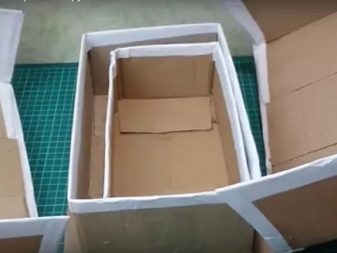
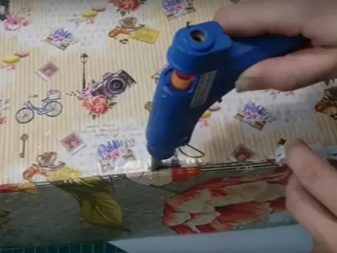
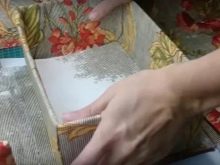
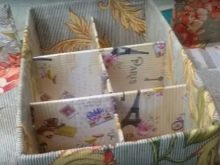
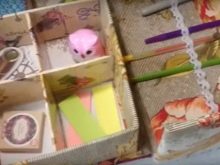
For information on how to make an organizer for sewing supplies, see the next video.








